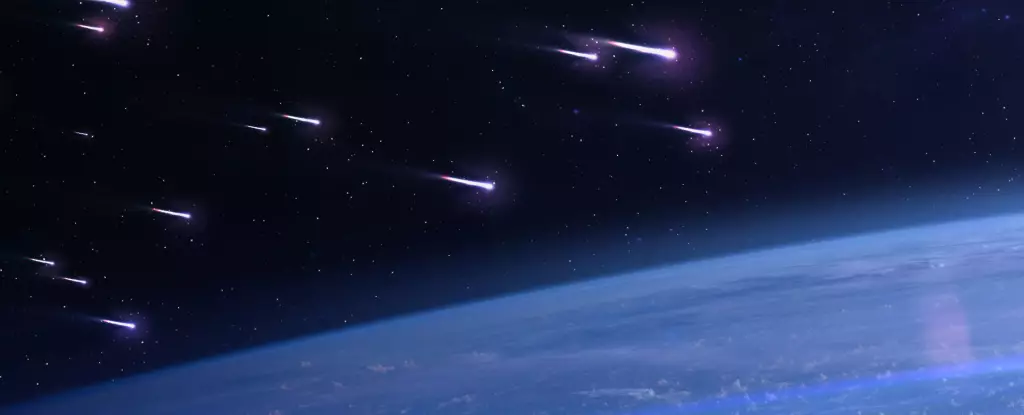Every November, the night sky offers a riveting spectacle that draws stargazers from around the world to witness the Leonid meteor shower. Historically significant and meteorologically intense, this event is not just a series of whimsical shooting stars; it tells a tale of periodic comets, cosmic debris, and the dance of the Earth through a stream of interplanetary dust. As we prepare for the Leonids, set to peak on November 17th, 2024, it is prudent to look back into the past and hold an eye towards the skies for what could be a breathtaking natural phenomenon.
The Leonids are linked to Comet 55P/Tempel-Tuttle, which travels around the Sun in a 33.8-year orbit. Each time we encounter this comet’s trail of remnants, the Earth becomes enveloped in a cloud of historic debris that can produce magnificent meteor displays. Notable past Leonid storms have summoned awe-inspiring rates of meteors, making the shower notorious among amateur astronomers and casual stargazers alike. For instance, the exceptional outburst of 1966, where observers recorded as many as 150,000 meteors per hour, is still a benchmark in meteor shower history.
Anticipation for 2024: An Off Year with a Twist
While the 2024 Leonid meteor shower is expected to be relatively quiet, with a Zenithal Hourly Rate (ZHR) of around 15 to 20 meteors per hour, there is an air of intrigue surrounding the event. Experts suggest that there might be tantalizing encounters with older meteor streams, specifically from the comet’s historical passes.
Research by astronomers, such as Jérémie Vaubaillon from the Paris Observatory, highlights the potential for Earth to interact with streams dating back as far as 1633 and 1733. The upcoming encounters have sparked discussions about whether these might lead to unexpected meteor activity during the November peak, especially on November 14th and 19th. These older streams could stir feelings of nostalgia for meteor enthusiasts, reminding us that celestial phenomena can sometimes surprise us, jumping beyond predicted expectations.
As you prepare for the Leonids, the conditions for observation play a crucial role. Early morning hours offer the clearest opportunity, particularly as the Earth moves forward into the stream of meteoroids. Set your equipment carefully, aiming towards the radiant in the constellation Leo, while also keeping some flexibility in your positioning to capture meteors streaking across your field of view.
To fully immerse in this stargazing experience, a tripod-mounted camera and an intervalometer can enhance your night. These tools allow you to automate the capturing process while you relax with a warm beverage, creating a delightful atmosphere under the cosmos. Despite challenges like bright moonlight due to the waxing gibbous phase, dedicating time to watch the skies is an investment in both patience and wonder.
As we gaze up into the grand theatre of the night sky this November, the Leonids remind us of the continual journey of both the comet and the Earth. Though the showers ebb and flow in intensity, each encounter breaks the silence of space, drawing us closer to the universe’s mysteries. With the next significant year for the Leonids predicted in the 2030s, perhaps this year’s lesser outburst can serve as a prelude for what could lie ahead.
In any case, stargazers are not merely passive observers; they are part of a historical continuum that reaches back centuries, tracing the paths of comets and the dust trails they leave behind. While forecasts suggest a restrained showing in 2024, every meteor sighting contributes to our collective narrative, encouraging exploration and discovery beyond our earthly confines. As the Leonid meteor shower beckons on the horizon, let us pause our daily routines for a moment and lose ourselves in the wonder of the cosmos.

